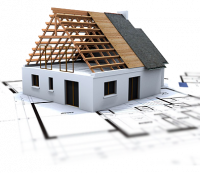Construction: investments in Italy set to fall by 15% in 2020

According to the new Cresme forecasts, a recovery of between +10% and +11% is expected in 2021. Public works will help to mitigate the downturn.
What impact will the economic crisis caused by the coronavirus pandemic have on the construction sector in Italy?
The Rome-based economic research institute Cresme is predicting severe consequences for 2020, including a decline in investments in construction and civil engineering of up to 15%, or as much as 23% if a second wave of infections occurs. This will be followed by a recovery in 2021, with gains estimated at between +10% and +11%.
The institute’s new forecasts were published on 29 April and take account of various aspects: the roadmap for the resumption of activities set out by the Italian government, the possible consequences for demand from households, businesses and the public administration, and the potential development curves for the epidemic, which in the worst-case scenario of a second wave of infections might force the sector’s operations to be halted once again.
Cresme outlined two alternative scenarios.
The first, the “baseline scenario”, envisages the following supply-side effects: almost total suspension of construction sites for two months (March and April) for new construction work that is not in the public interest and for building renovations, except for urgent repairs (consider that 35% of work is carried out between March and May); partial suspension of civil engineering works for new construction and extraordinary maintenance (excluding strategic infrastructures, healthcare buildings, etc.); and a cautious resumption of activities between June and October.
As for the demand side, it is assumed that new construction decisions for 2020 were made some time ago and that the potential impact of any cancellations/postponements will therefore be absorbed by the suspension and slowdown of construction site activities. For renovation work, however, it is important to bear in mind that the weak economy and the lower confidence of households and businesses are further negative factors alongside the construction site closures. Cresme also looks at a “worst-case scenario” in which there is a need for a second – but hopefully less strict – lockdown (it may be diversified geographically depending on the prevalence of infections, it may have a shorter duration compared to the first lockdown, and it may envisage simpler procedures for a return to business).
For 2020, the impact on construction will be split equally between the residential and private non-residential sectors, with renovation work bearing the brunt of the downturn, at least in the baseline scenario.
Investments in new construction may fall by about -16% (-29% in the worst-case scenario), while for non-routine maintenance the expected decline is -22% (-29% in the case of a second lockdown) in both residential and non-residential sectors. Private construction may recover in 2021, albeit without regaining the levels of activity lost this year. Forecasts point to +12.3% growth compared to a -20% overall decline in 2020 in the baseline scenario (considering both new construction and renovation).
Public works
The figure for public works merits further analysis. Following the slowdown of 2017, investment spending in construction and civil engineering had resumed growth with +2.3% in 2018 and +6.5% in 2019.
In November 2019, Cresme’s forecasts for 2020 pointed to +4.5% growth driven by the start-up of extraordinary maintenance and new construction work aimed at reducing the country’s infrastructure deficit. Unfortunately, these forecasts are bound to change given the impact of the pandemic on the sector, and the outcome will largely depend on when the crisis is resolved. In the baseline scenario, investments in the public works sector in 2020 are expected to grow by just 0.9% (-5.7% in the worst-case scenario) as a combined result of growth in the first two months of the year (January-February) followed by a slowdown between March and June and a sharp upturn in the second half of the year. This second-half recovery will be driven by the return to full-scale operation of construction sites that were already underway before the lockdown and by the start-up of new construction work financed with resources allocated by the 2020 Budget Law (DEF 2020 of 24 April 2020), in which the growth rates of gross fixed investments in public administration are expected to be 2.7% in 2020 and 11.2% in 2021.
Table 1 –Investments in construction in Italy in 2020 and 2021 (% variation at constant values)
|
|
2020 (baseline scenario) |
2021 |
|
Investments in private building |
-19.9% |
+12.3% |
|
Investments in public works |
+0.9% |
+4.5% / +10% |
|
Total investments |
-14.7% |
+10% / +11.6% |
Table 2 –Investments in construction in Italy in 2020 (% variation at constant values)
|
|
Baseline scenario |
Worst-case scenario |
|
New construction |
-9.7% |
-20.5% |
|
-15.6% |
-28.8% |
|
-15.9% |
-29.1% |
|
+1.6% |
-8.2% |
|
+0.6% |
-4.7% |
|
Renovation |
-17.2% |
-24.1% |
|
-21.7% |
-28.3% |
|
-21.2% |
-29.1% |
|
+1.6% |
-8.2% |
|
+0.6% |
-4.7% |
|
TOTAL INVESTMENTS |
-14.7% |
-22.9% |
Table 3 –Investments in public works in Italy
|
|
2018 |
2019 |
2020 forecasts |
2021 forecasts |
||||
|
nov. 2019 |
april 2020 Scenario 1 |
april 2020 Scenario 2 |
nov. 2019 |
april 2020 Scenario 1 |
april 2020 Scenario 2 |
|||
|
Var.% (at constant prices) |
2.3 |
6.5 |
4.5 |
0.9 |
-5.7 |
3.5 |
4.5 |
10.0 |
Did you find this article useful?
Join the CWW community to receive the most important news from the global ceramic industry every two weeks





















